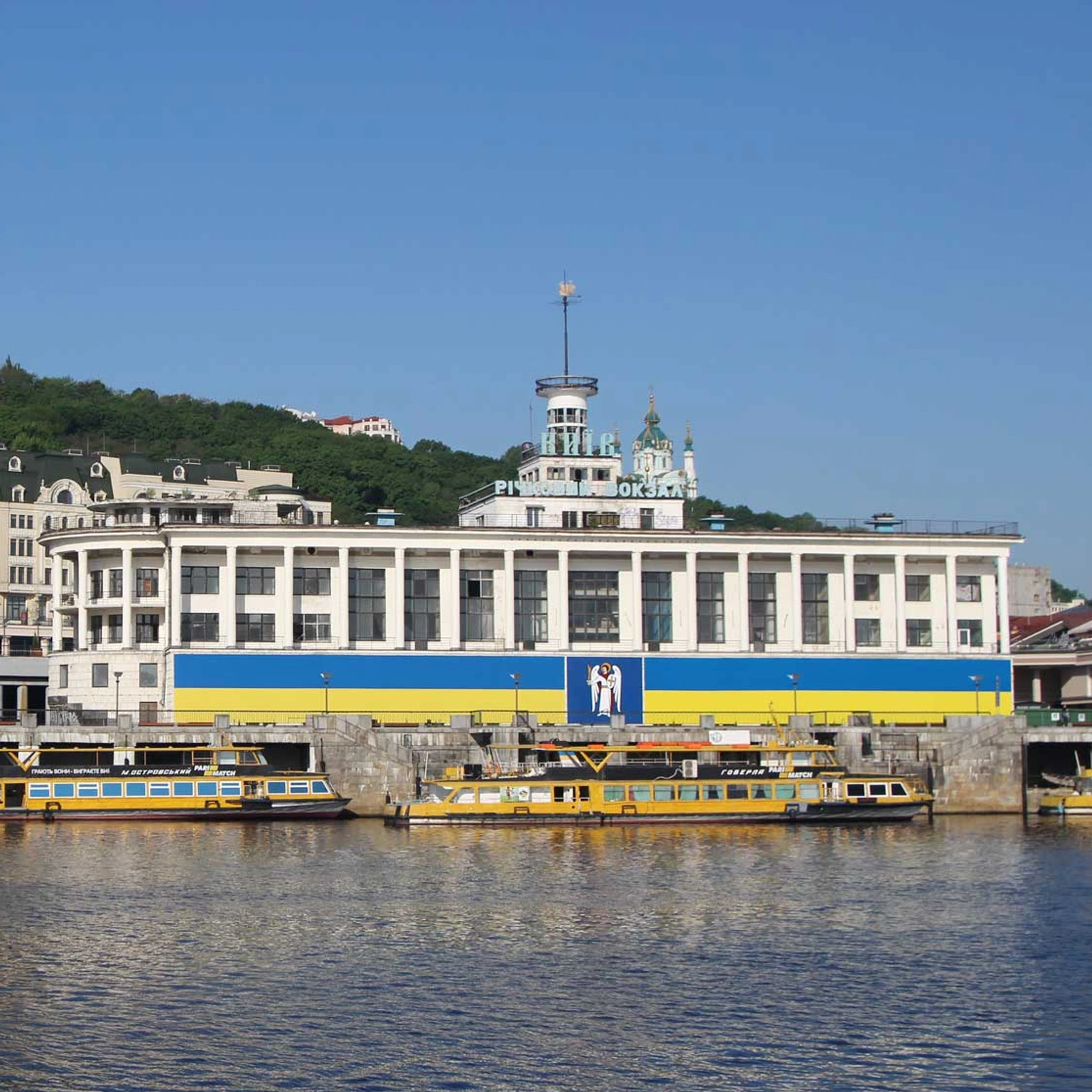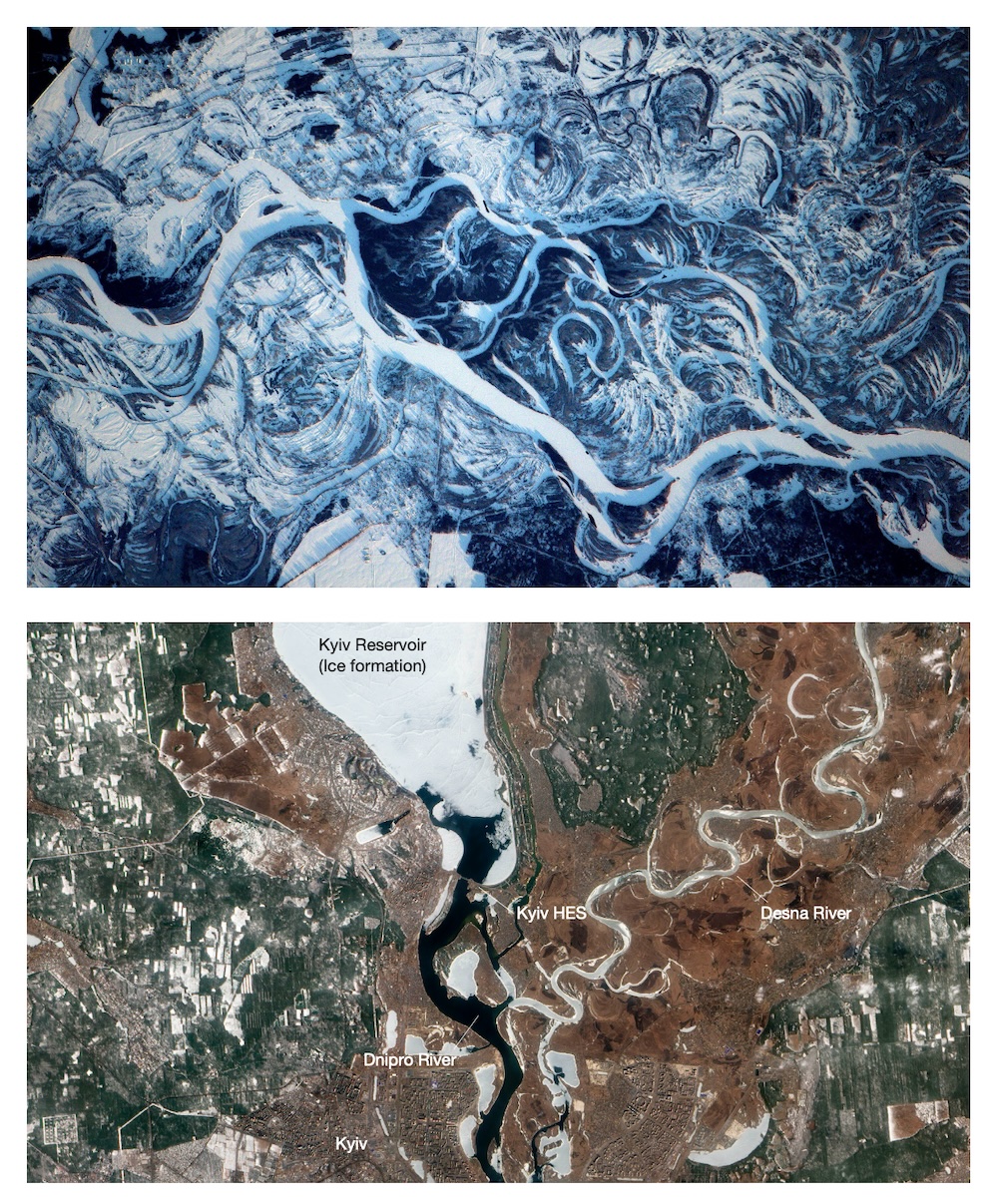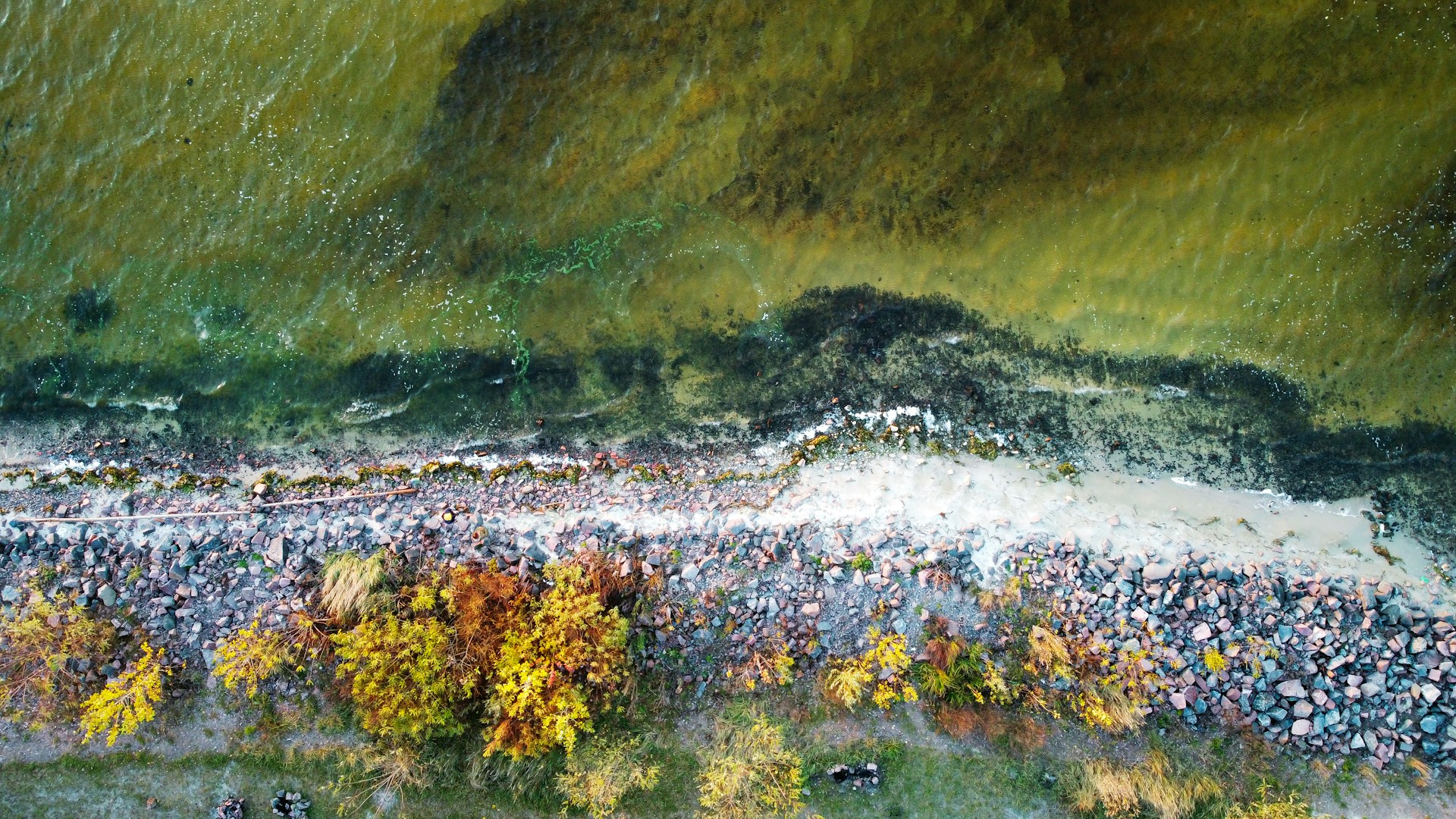“Dnipro River Integrated Vision” was developed by a joint team of experts from the Ro3kvit urban coalition and Greenpeace Central and Eastern Europe. This document was created in the context of the current challenges facing Ukraine due to the environmental, economic and social consequences of the war, as well as the need for sustainable development. The aim of this vision is to present a comprehensive strategy for the conservation and restoration of the Dnipro River, which is vital to Ukraine’s ecosystem, economy and culture.
Humanitarian Media News presents key messages from the work of urban and environmental activists.
Read also: Digitalisation of the Healthcare System: Viktor Liashko Announces Innovations at the eHealth Summit
Why this vision was created?
For centuries, the Dnipro has been not only a source of water but also a symbol of national identity and cultural heritage. It provides millions of people with water, serves as an important transport artery, and feeds agriculture and industry. However, since the beginning of Russia’s aggression against Ukraine, the river has been severely tested. The destruction of the Kakhovka dam, water pollution and the threat of environmental disaster have become new challenges for its ecosystem and economy.

– In fact, there is no better time to talk about the future than today. This is a study that connects the dots. As you can see, the Dnipro River, like a thin blue line, connects all of this. It goes from city to city, but it also connects problems with solutions, connects the past with the future.
The war not only increases environmental risks, but also creates preconditions for rethinking approaches to the restoration and use of river resources. In this context, the Dnipro is becoming an important component of strategic planning for Ukraine’s sustainable development.

The Integrated Vision of the Dnipro River project has started a discussion about the importance of the river for Ukraine and what can be done to preserve our main waterway. We hope that the discussion will continue in urban circles and government offices, including on the inexpediency of restoring the Kakhovka dam and reservoir.
The importance of the Dnipro River for Ukraine
The significance of the river goes beyond purely geographical or economic indicators – it is a fundamental source of life for millions of people, as well as an important part of national identity. The Dnipro is closely linked to many areas of Ukrainian life, from agriculture to energy, industry and culture.
One of the most important functions of the river is water supply. The Dnipro supplies drinking water to many cities and villages. The river is also used for industrial purposes, including cooling thermal power plants and other large industrial enterprises. At the same time, the river is a source of water for agriculture, providing irrigation for fields in the arid regions of southern Ukraine.

Another important function of the Dnipro is energy. River dams and hydroelectric power plants, including the Dnipro and Kakhovka HPPs, generate a significant portion of Ukraine’s electricity. The Dnipro ensures the stable operation of these facilities, while retaining the potential for renewable energy development. Amid the war and the threat to Ukraine’s energy security, sustainable use of the river’s water resources is becoming even more important.
The Dnipro River’s contribution to the development of tourism and recreation is no less significant. The natural landscapes, protected areas and numerous historical monuments along the river’s banks attract tourists and become a place for recreation. National parks and nature reserves are particularly popular, preserving the unique flora and fauna associated with the river’s ecosystem.

– Unexpectedly, in the course of our research, we discovered that this river and basin are absolutely much more biodiverse than we expected.
In addition to its economic and environmental importance, the Dnipro plays a key role in Ukraine’s cultural and historical heritage. Historically, the river was the site of key events that shaped the Ukrainian nation. It is also mentioned in many literary works, songs and folklore, where it is described as a symbol of the power and beauty of Ukrainian nature.

Read also: UN Report for August: Loss of Lives and Infrastructure Destruction
The impact of the war on the Dnipro River
With the outbreak of Russia’s military aggression against Ukraine, the Dnipro River was threatened. The hostilities have dealt a significant blow to the river’s ecosystem, caused humanitarian and economic crises, and deteriorated water resources. In this context, the Dnipro has ceased to be a source of life and has become a frontline where the war creates new threats to both nature and people.
One of the biggest environmental disasters associated with the war was the destruction of the Kakhovka Dam. This tragedy caused massive flooding of settlements, destruction of agricultural land and catastrophic consequences for the region’s ecosystem. Millions of people were affected by the dam’s destruction, as the quality of water supply deteriorated significantly and water resources for irrigation in many regions of southern Ukraine disappeared. The drop in the water level in the Kakhovka reservoir also had a negative impact on biodiversity, wiping out numerous species of fish and aquatic plants.

© Greenpeace / Copernicus Sentinel-2
In addition to the destruction of infrastructure, the war has caused other environmental threats, such as water pollution. Explosions, shelling and the destruction of industrial plants on the banks of the Dnipro River have led to leaks of hazardous chemicals that have entered the water. This has caused a serious deterioration in water quality, disrupting water supply systems in many towns and villages and posing a threat to human health and the river’s ecosystem.
Another significant problem is energy insecurity. The Russian military has been targeting energy facilities, including hydroelectric power plants on the Dnipro River. This not only affects the stability of energy supply in Ukraine, but also creates additional risks to water resources and the safety of the river in general. Attacks on critical infrastructure, such as the Kremenchuk HPP, threaten the integrity of the water system and could lead to even larger-scale disasters.

– We believe that a decentralised energy system or energy generation is essential for the sustainable future of the river and Ukraine. And it is time to start discussing this across the country.
Read also: East SOS: Humanitarian Aid Isn’t Keeping People from Danger
Strategies and visions for the future of the Dnipro River
In the face of current challenges caused by war, environmental disasters and climate change, the preservation of the Dnipro River is becoming a priority for Ukraine’s sustainable development. The future of the Dnipro depends on an integrated approach to restoring its ecosystems, managing water resources, and engaging communities in developing new strategies for using the river. An integrated approach involves combining environmental, economic and social aspects to ensure the river’s long-term sustainability.
Clean and accessible water
One of the key strategies for the future of the Dnipro is to ensure clean and accessible water. To do this, it is necessary to improve the water treatment system and prevent further pollution of the river caused by both military operations and industrial waste.
Protection of biodiversity and natural resources
Preserving the biodiversity of the Dnipro River is another critical task. The river is home to many species of fish, birds and other living organisms, and its degradation can lead to irreversible losses.
Developing a green and circular economy
The future of the Dnipro also depends on the development of a green economy based on sustainable use of resources. It is important to focus efforts on diversifying the economies of the regions that depend on the river, encouraging environmentally friendly production and the introduction of new technologies to reduce the negative impact on the river.
Sustainable energy
Energy independence and sustainability are key to the future development of the Dnipro River. It is necessary to rethink the use of hydroelectric power plants on the Dnipro, taking into account their negative impact on the river’s ecosystem and possible threats in the event of military action.
Participatory governance and community engagement
The last but not least element of the strategic vision for the future of the Dnipro River is the involvement of communities and all stakeholders in the decision-making process. River resource management should be transparent and inclusive, so that every resident, community, and business can participate in the development and implementation of sustainable development strategies for the Dnipro.
Read also: Barrier-free accessibility as a strategy: what Ukrainian entrepreneurs and public figures think about it
Integrated strategy: first steps
The sustainable future of the Dnipro River cannot be ensured without an integrated approach to its development. The integrated strategy envisages a combination of environmental, economic, social and infrastructural measures that will help restore and preserve the river for future generations. An important aspect of this strategy is the interconnection between different sectors – environmental, energy, transport, agriculture, etc. To effectively manage river resources, it is necessary to take the first steps that will lay the foundation for further development.
- Conservation of water resources means that any actions related to infrastructure or economic development should be carried out with due regard for the water balance and environmental stability of the river system. Water use should be rational, with minimal negative impact on the ecosystem.
- Energy efficiency. Given that the river plays an important role in electricity generation, it is necessary to review approaches to managing hydroelectric power plants, reduce their environmental impact and introduce alternative energy sources.
- Inclusiveness. The management of the river and its resources should involve communities, local authorities, businesses and civil society in the decision-making process. Only through cooperation and collective action can sustainable results be achieved.

Read also: Staying Warm in Winter: What Charities and Authorities Offer to Ukrainians
Development scenarios
The Dnipro Integrated Development Strategy envisages three possible scenarios for the river’s future, each of which takes into account different levels of interaction between natural resources, the economy and social aspects.
Scenario 1: Conservative. This scenario assumes minimal changes in the current use of the river. The focus is on preserving the existing infrastructure and gradually addressing environmental issues. The main emphasis is on maintaining the stable operation of hydropower plants, water supply systems and agricultural needs. However, this approach does not take into account the need for rapid action to respond to the challenges of climate change and military threats.
Scenario 2: Innovative. The second scenario envisages active modernisation of river infrastructure and introduction of the latest technologies for water management. This includes creating new water collection and treatment systems, developing renewable energy sources, and switching to environmentally friendly production methods. The main goal of this scenario is to make the Dnipro resilient to climate change and military threats, while preserving its natural value.
Scenario 3: Radical environmental. This scenario envisages fundamental changes in the use of the Dnipro River with a focus on restoring its natural state. It envisages a significant reduction in anthropogenic impact on the river, a gradual reduction in the use of hydropower plants, and the return of part of the river to its natural course. This approach also includes massive measures to restore biodiversity and preserve natural ecosystems. The scenario requires significant financial and political efforts, but could become a model for sustainable development of river basins around the world.

Read also: Psychologists are for psychos, but I’m normal. How support groups break the stigma of psychological help
First steps to implement the strategy
On the way to implementing an integrated strategy for the Dnipro River, it is worth starting with concrete actions that will lay the foundation for future success. The first step would be to create a national programme to restore the river, which would include various aspects such as environmental monitoring, infrastructure restoration, renewable energy development and biodiversity protection.

– Above all, the river basin is a source of life in all aspects. People, flora and fauna, economy and identity. Secondly, we believe that the approach to the river is currently too technical. We are absolutely convinced that it needs to be complemented by nature culture and social perspectives more than it is currently being done.
It is also important to establish a river water management body that will coordinate the activities of all stakeholders, from local communities to national government agencies. Such a structure will ensure effective river management at all levels.
The final stage of the first steps should be the development of a roadmap for the implementation of the integrated strategy, including specific projects, timelines and funding sources. This map will form the basis for future actions and help to clearly define how to achieve the goals step by step.

We are aware that the key findings of the Integrated Vision for the Dnipro River have already formed the basis for the comprehensive projects mentioned in the Master Water Resources Management Plan for Ukraine. Ukraine has submitted this document to the European Commission.
Thus, the first steps towards implementing an integrated strategy for the Dnipro River should be based on the conservation of natural resources, the development of a green economy, and the active involvement of communities. They will lay the foundation for the Dnipro’s sustainable development, making it a reliable source of life and prosperity for future generations.
Read also: Ukraine Bets on Green Energy: Government Approves Plan Through 2030



